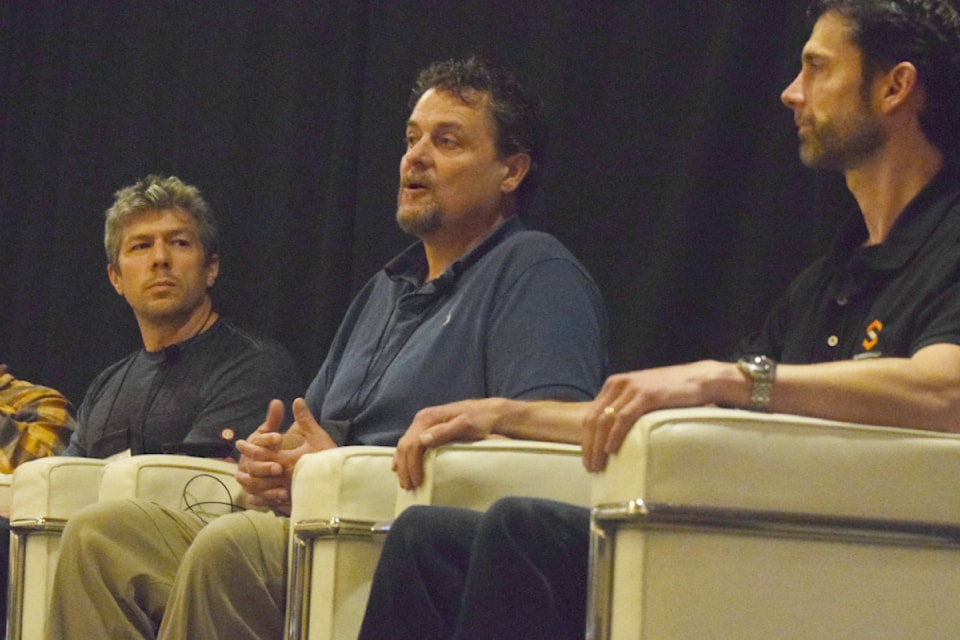Bringing together ancestral wisdom and modern-day forestry practices is key to ensuring the future of the forest industry, according to a number of panelists at the Indigenous Forestry Conference.
Port Alberni played host to dozens of Indigenous leaders and foresters earlier this month as the first annual Indigenous Forestry Conference took place on Sept. 10 and 11 at the Best Western Plus Barclay Hotel. The two-day event featured a number of panels and networking opportunities that brought together leaders, forestry professionals and policymakers to discuss Indigenous forestry.
The event highlighted a few success stories, like Huu-ay-aht First Nation's majority ownership of Timber Tiles, an innovative value-added wood tile company. The collaboration works well because Timber Tiles uses hemlock, which is a lesser-desired wood in the construction market, and Huu-ay-aht has a consistent supply of the wood to support the business.
Founder Mark Anson explained that he tries to incorporate the sacred principles of Huu-ay-aht into all aspects of the company: Iisaak (respect), Uu-a-thuk (taking care of) and Hishuk Tsa'wak (everything is one).
"Without the Huu-ay-aht owning Timber Tiles, there would be no Timber Tiles," he said.
But partnerships like this have been hard fought-for. Wickaninnish Cliff Atleo Sr., hereditary chief of Ahousaht First Nation, moderated a panel on hereditary roles in resource stewardship, where he talked about the War on the Woods in the 1990s. According to Atleo, ha’wiih (hereditary chiefs) of the Clayoquot Sound region were some of the loudest voices arguing with the provincial government about sustainable forestry practices.
The War in the Woods ended after the province agreed to adopt the recommendations of a scientific panel, which included Nuu-chah-nulth elders.
"They didn't talk to us because it was the right thing to do," said Atleo. "The only reason they talked to us is because we forced them to. We grabbed them and we weren't going to let go."
Laxele'wuts'aat Shana Thomas, hereditary chief of Lyackson First Nation in Chemainus, said that historically there hasn't been as much collaboration on the east side of the Island between the government and First Nations leaders. In 2003, the provincial Liberal government established the Private Managed Forest Lands Act, which privatized forest lands.
"The act really failed our people," Thomas said. "It failed to recognize and protect our cultural values on private land. We're excluded from decision-making in large swaths of our territory as a result of this act."
Thomas says that sustainable harvesting is the key to ensuring long-term employment, both for Indigenous and non-Indigenous foresters, and in order to have healthy forests the industry needs to incorporate Indigenous voices, knowledge, wisdom and snuw'uy'ulth (teachings) into its practices.
"It is not our way to be capitalists, and that's why we struggle," she said. "It's so against everything we are as a people. We don't go in to make money, we go in to help our families, our communities and our elders."
Atleo agreed that there can be a disconnect between forestry practices and Indigenous rights and territories.
"We live in a world that is so opposite to our values and our ways," he said. "We have the understanding and belief that there is no separation between the spirit world and our world. There is a connection. We need to understand that connection, and what we do upriver impacts what we do downriver. What we do up the hill impacts down the hill."
Gerald Cordeiro, forest development manager at Kalesnikoff Mass Timber, said that the future of forestry in B.C. is very much connected to Indigenous culture.
"As the Indigenous control of tenure and decision-making ability expands greatly over the next few years, figure out what you're going to do a little different than what the people who came before did," he suggested to the crowd gathered in Port Alberni.



